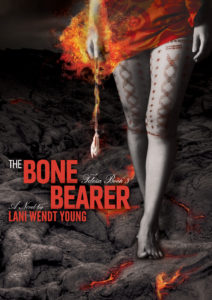 The TELESÁ or TEINE SÁ, according to Samoan legend, are the ‘spirit women’ that guard specific forests, villages, pools and falls in Samoa. These spirit women fulfill their purpose with nature’s gifts.
The TELESÁ or TEINE SÁ, according to Samoan legend, are the ‘spirit women’ that guard specific forests, villages, pools and falls in Samoa. These spirit women fulfill their purpose with nature’s gifts.
Their gifts come in the form of fauna afi (fire), matagi (wind) and vasa loloa (ocean).
As far as the legends go, offending the TELESÁ has consequences that are not limited to shallow punishment alone. The intriguing part is, does it remain a myth? Or are they walking among us up until now?
Offending the telesá would be through being mean and being too proud towards the village people of the islands. As protectors of the fanua (earth), they serve as guardians of Mother Nature. And they surround the whole Pacific. Beware when you throw rubbish anywhere like used water bottle, cigarette butt or bubble gum! Your actions may earn consequences.
4 books compose the Telesa Series. Namely, (1) Telesa – The Covenant Keeper Book 1, (2) When Water Burns, (3) I Am Daniel Tahi and lastly (4) The Bone Bearer. These books tell a love story of elementals willing to go to great lengths in the name of love. With the irony between fulfilling their purpose and keeping their families safe, read on up to what extent will they go to conquer it all?

Before writing this review, I researched about the whole thing. From what a telesá really is, who the author was and if legends were correct.
WHAT IS A TELESA?
From knowing that they are spirit women, a friend of mine asks, “So, are they bad? Why is writing a story about them intriguing to read?”.
Well, there’s always different perspectives on how a subject maybe seen. From my point of view, I see the Telesas as the ‘karma’ that will come to you depending on what you throw into the universe. Since their outright mission is to keep fanua’s greatness, it is important to become aware of whether we pollute it or keep it.
It is quite admirable how Lani Wendt Young keeps a reader’s interest of the book intact from a tell-tale of an introduction. It is quite breathtaking from start to finish. To engage the readers from the beginning, she used the Legend of Telesás. These were stories passed from the elders to younger generations in pursuit of developing fear of the supernatural.

Eventually, the whole story shared an aggressive cry for the people to stop polluting the earth. With a familiar story line of love, revenge and betrayal, it became more than mysterious.
Since it seems that the telesás can only be offended this way, for me, they are most rather, not bad. But they can teach you a thing or two if you consider yourself more dominant than mother nature herself. It may also reach a fatal fate.
I understand that there are other stories about telesás that Samoan elders used to scare the little children with when they act naughty. I have asked other Samoans myself if they believed in Telesás. And each of them said “Yes.”
A message from the author:
According to legend, they are vengeful, fierce protectors who curse and possess people who trespass against them and the taboos for treating the land. They are hauntingly beautiful and very jealous women. I grew up listening to the stories which were often used as a way to ‘make us’ young girls behave. For example, teine Sá supposedly didn’t like it when you wore your hair down, put flowers in your hair, laughed loudly, or walked in the streets after dark.
The ‘Teine Sa’ I heard the most tales about was one called, “Telesá from the village of Lepea. I remember our elderly babysitter, covering up all the mirrors in our house at night — because Telesa didn’t like us to gaze at our reflections or admire our appearance. I have seen girls suffer from ‘unknown’ illnesses that were supposedly the result of being cursed by Telesa. The subject of Teine Sá is a somewhat forbidden one in Samoan culture though and people don’t like to talk about them for when it invokes their anger.
– originally published in the Telesa Book 1, The Covenant Keeper
Also, the people I have asked specifically mentioned the village of Lepea having these women. And that the beautiful Sliding Rocks that I got to see earlier this year, is also guarded by them in Papase’ea. At the pools where the falls end, locals hear them laughing and singing only to find out there’s nobody there.
WHAT IS THE STORY ABOUT?
The main storyline revolved around Leila’s decision to fly to Samoa to rediscover her roots. Or at least the other half of it.

Leila is an afakasi (half-caste), whose Dad is from America and her mom is from Samoa. As she stays in Samoa and gets in touch with her mom’s side, revelations went a long way from who her mom is…. or ‘what’ she really is.
Along the way, she meets a boy named Daniel (an afakasi as well), whom she didn’t just fall for but had helped her unleash something within her, the gift of fire. The world’s elementals awakened because it led the world in great danger. Their love stayed strong as challenges arose right and left. Then it gets tested ultimately. Something reincarnates beyond the realm of reality and takes over Leila.
Twilight of the Pasifika
I read both novel series and the only common thing that they share is that, it was written in the Young Adult Category. It is an understatement to even compare Lani Wendt Young’s work to that of Stephenie Meyer’s “Twilight”.
First and foremost, before you compare, have a read of the first book at least. This is to give you an idea of how it is different. From inputting lots of good details about Samoa, including recipes and people’s point of view, it was brilliant. This is my opinion. And with Twilight, there was none like that.
Secondly, nobody had the courage to use the stories of the Telesá while vampires and wolves were almost common knowledge. While some say it is dangerous, I believe that Lani had channelled people’s curiosity of what Telesás really are, into something understandable and of utmost importance in the society. If they still do walk among us in this lifetime, let me consider them mutants, whose gifts or powers may serve as well anyways.
Ok, this may not have direct benefit to the people but social acceptance may turn out necessary to work side-by-side in saving what’s left of earth from pollutants. Nowadays, ownership of nuclear bomb predict who the rich countries are. Let alone when they make a nuclear test explosion in the ocean. I am anti-nukes. And who else could stop them. If telesás were to act on this, I’d say some of the awful natural calamities are results of their disappointment.
Thirdly, how incredible to see Samoa through Lani’s eyes. It made me fall in love more to it than the characters or the love story or the plot. She resolved the mystery of Samoa in my head and yet, in my heart, it remains to feel that there’s more to what we can see or read. Experiencing Samoa is truly being home.
HOW IT HELPS
In her writing, she prepares the Faletua in me by pouring substantial information about the culture, food and norms of the country. My mother-in-law literally advised me to study Samoa and I was determined right before I was about to fly out Faleolo Airport. And this is the book that shouted from the corner of my eye. No wonder, it had become a text course in Pacific Literature Classes. It is truly informative, sincere in presenting Samoan ways and words that bound the story to Samoan culture weaved graphically and appears in 3d in my imagination with such powerful words and detailed description.
ABOUT THE AUTHOR

Author and professor Lani Wendt Young, had recently been the 2018 ACP Pacific Laureate, chosen by Africa, Caribbean, and the Pacific Group of States. This award hails creativity, entrepreneurship and courage. The prize acknowledged her Young Adult Series: “Telesá Trilogy” including that of a book from Daniel’s point of view called, “I Am Daniel Tahi”. The approach she had made with this particular series had become quite interesting. Using digital printing, Samoa’s culture is made understandable and shared globally.
She was born in Samoa, studied in USA and New Zealand and returns to Samoa with a heart full of promise as a teacher. After being recognised multiple times and winning numerous awards in short story competitions, journalism and in her mission to attract more and more young adults to read, she now had published 9 books.
Being the co-founder of the Samoan Planet, she had been constantly a guest in many talk shows. While she writes novels on the side, she remains a columnist and an essayist writing about religion, feminism, culture and many more.
She also keeps up a blog called Sleepless in Samoa that talks a lot about what keeps this superwoman human. She vents out regarding her frustrations, personal challenges and limitations and seals it with triumphant ways as she retrieves herself. According to her, this is her utmost first love for it allows her to write freely.
I look up to her skill in starting a novel so enthusiastically that any audience would feel hooked and it turns out, flawlessly engaged. She now lives in Samoa, with her husband and five children.
I pray that someday, she could sign my books. And oh yeah! This is a 5/5 for me.

